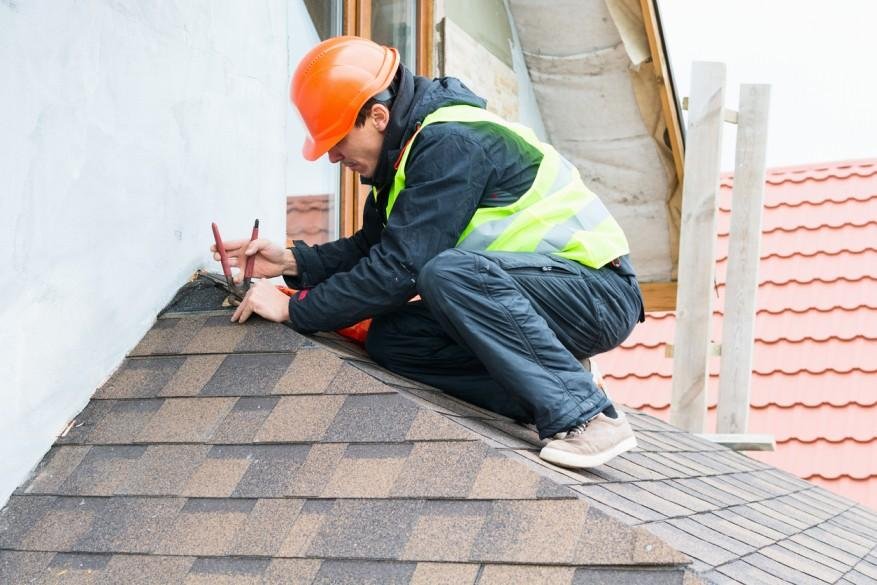Introduction
Have you ever wondered if roof repairs may be completed at any time of year, or if you must wait for the ideal weather? Roofs, like everything else, require regular care, and understanding the optimal time to handle issues is critical. Whether you have a tiny leak or a large structural issue, timing your roof repair can make a big difference.
In this article, we’ll look at the best and worst periods for roof repairs, how weather influences the process, and whether it’s better to wait for optimum conditions or start the project immediately.
Understanding the Basics of Roof Repairs
What Are Roof Repairs?
Roof repairs entail repairing damage or wear and tear on your roof to keep it robust and functional. This can entail patching leaks, replacing shingles, repairing flashing, and even dealing with structural issues. Because roofs are exposed to the weather, they are prone to various problems that might worsen with time.
Why Are Roof Repairs Essential?
A damaged roof can cause leaks, mold development, and structural difficulties, jeopardizing the safety of your property. Timely fixes guarantee that minor issues do not grow into costly replacements.
Factors Affecting Roof Repairs
Weather Conditions
The weather has an important influence on when roof repairs should be performed. Extreme weather conditions, such as heavy rain or freezing temperatures, can make repairs difficult or even dangerous.
Roof Type and Material
The type of roof you have, such as asphalt shingles, metal, or tile, can influence how it reacts to weather and how easy it is to repair.
Seasonal Breakdown for Roof Repairs
Roof Repairs in Winter
Winter is not usually the best season for roof repairs. Cold weather can make materials such as asphalt shingles brittle, and ice or snow buildup can make working on the roof dangerous.
Challenges in Winter Roof Repairs
- Ice makes the roof slippery, creating a safety concern.
- Freezing temperatures can have an impact on roofing materials’ adhesive characteristics.
When Is It Safe to Perform Repairs in Winter?
Emergency repairs can be completed in the winter if the weather is mild. However, it is advisable to wait for a warmer day or hire professionals to handle it.
Roof Repairs in Spring
Spring is one of the best times to do roof repairs. As the weather warms and the snow melts, any damage from the winter becomes more visible.
Why Spring Is Ideal for Roof Repairs
- Mild temperatures make it easier for materials to bond properly.
- There’s less moisture compared to other seasons.
Common Issues After Winter
During the winter, many roofs sustain minor damage such as loose shingles, gutter obstructions, and ice dam breaches. Spring is ideal for analyzing and resolving these issues.
Roof Repairs in Summer
Summer might be an excellent time for roof repairs, but the heat brings its own set of issues.
Heat and Roofing Materials
High temperatures can soften some materials, such as asphalt shingles, making them more vulnerable to harm if not handled correctly.
Advantages of Summer Repairs
- The dry weather makes it easier to work on the roof.
- Longer daylight hours provide more time to finish work.
Roof Repairs in the Fall
Fall is another prime season for roof repairs, especially for prepping your roof for winter.
Preparing for Winter with Fall Repairs
Addressing leaks or broken shingles in the fall guarantees that your roof is able to manage the weight of snow and ice in the winter.
Why Fall Is a Good Season for Roof Maintenance
- Cooler temperatures are more conducive to productivity than summer heat.
- It’s an excellent time to address any outstanding issues before the weather becomes worse.
Best Weather Conditions for Roof Repairs
Temperature Considerations
Most roofing materials bond best between 40°F and 85°F. Working outside these temperatures can lead to issues like cracking or improper sealing.
Rain and Humidity Levels
Roofing work should be done in dry conditions. Rain can not only slow the process but also create safety risks and compromise the quality of repairs.
When You Should Avoid Roof Repairs
Heavy Rainfall
Roofers find it difficult to operate safely in wet weather, and materials may fail to attach properly.
Extreme Temperatures
Extremely cold or hot weather can interfere with how roofing materials function and bond.
Storms and High Winds
High winds during roof repairs endanger both workers and the roof’s structural stability.
The Role of Roofing Materials in Different Seasons
Asphalt Shingles
Asphalt shingles can be fixed during most seasons, but intense cold makes them brittle.
Metal Roofs
Metal roofs are more durable and can withstand temperature changes better than other materials.
Tile Roofs
Tile roofs are durable but require specific handling in colder temperatures to avoid cracking.
Emergency Roof Repairs
What Constitutes an Emergency Repair?
Leaks during a downpour or damage from a tree fall may necessitate rapid treatment.
Can Emergencies Be Handled in Bad Weather?
Sometimes, temporary fixes like tarping the roof can be done until permanent repairs are possible.
Safety Concerns with Roof Repairs
Risks of Working in Extreme Weather
Slippery roofs and unexpected weather make roof work dangerous, therefore it’s critical to choose the correct time.
Importance of Professional Help
Professional roofers have the skills and equipment to complete repairs safely, especially in inclement weather conditions.
Advantages of Scheduling Roof Repairs in Off-Season
Cost Savings
Since fewer people schedule roof repairs in the off-season, contractors may offer discounts.
Availability of Contractors
You’ll have an easier time booking a contractor when demand is lower.
Also Read: The Importance of Gutter Maintenance for Richmond Roofs
Signs You Need Immediate Roof Repairs
Visible Leaks
If water is dripping inside your home, it’s time to call a roofer immediately.
Sagging Roof Sections
A sagging roof indicates structural damage that needs urgent attention.
DIY vs Professional Roof Repairs
Pros and Cons of DIY Repairs
While DIY repairs can save money, they frequently lack the quality and durability of expert labor.
Why Professional Repairs Are Often Better
Roof repair services have experience in handling difficult repairs and may notice faults that others may overlook.
How to Choose the Best Time for Your Roof Repairs
Consider the Age of Your Roof
Older roofs may require more frequent repairs, regardless of the season.
Geographic Location and Local Weather
Your local climate will play an important role in deciding the optimal time for repairs.
Preventative Measures to Avoid Major Repairs
Regular Roof Inspections
Regular inspections might help you identify problems before they become costly.
Gutter Maintenance and Cleaning
Keeping your gutters clean helps to avoid water damage and leaks.
Conclusion
While roof repairs can be done at any time of year, spring and fall provide the ideal circumstances for the majority of repairs. However, even in inclement weather, crises may necessitate fast action. Understanding the challenges of each season and selecting the best time for your specific needs will guarantee that your roof remains in good condition year after year.



